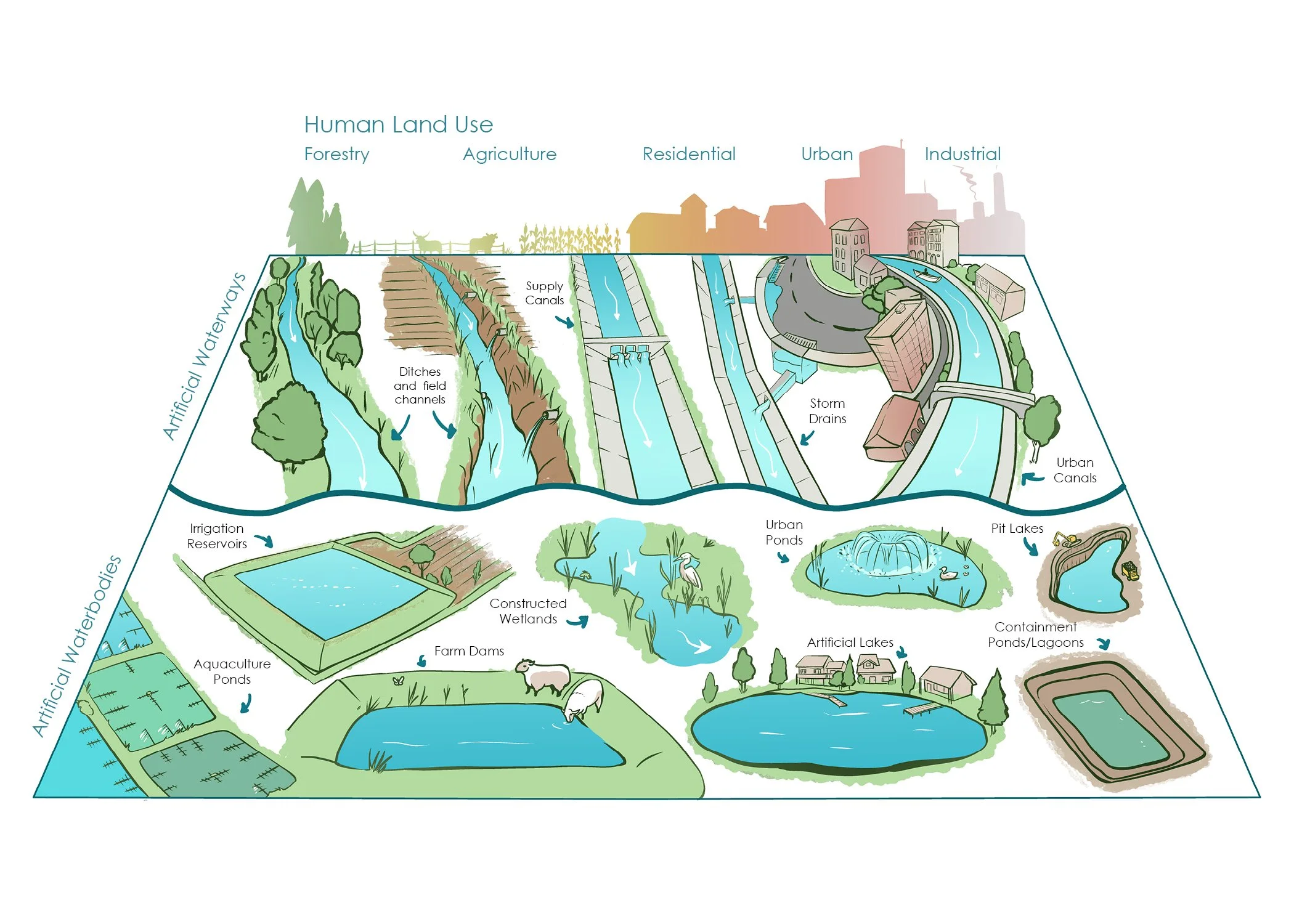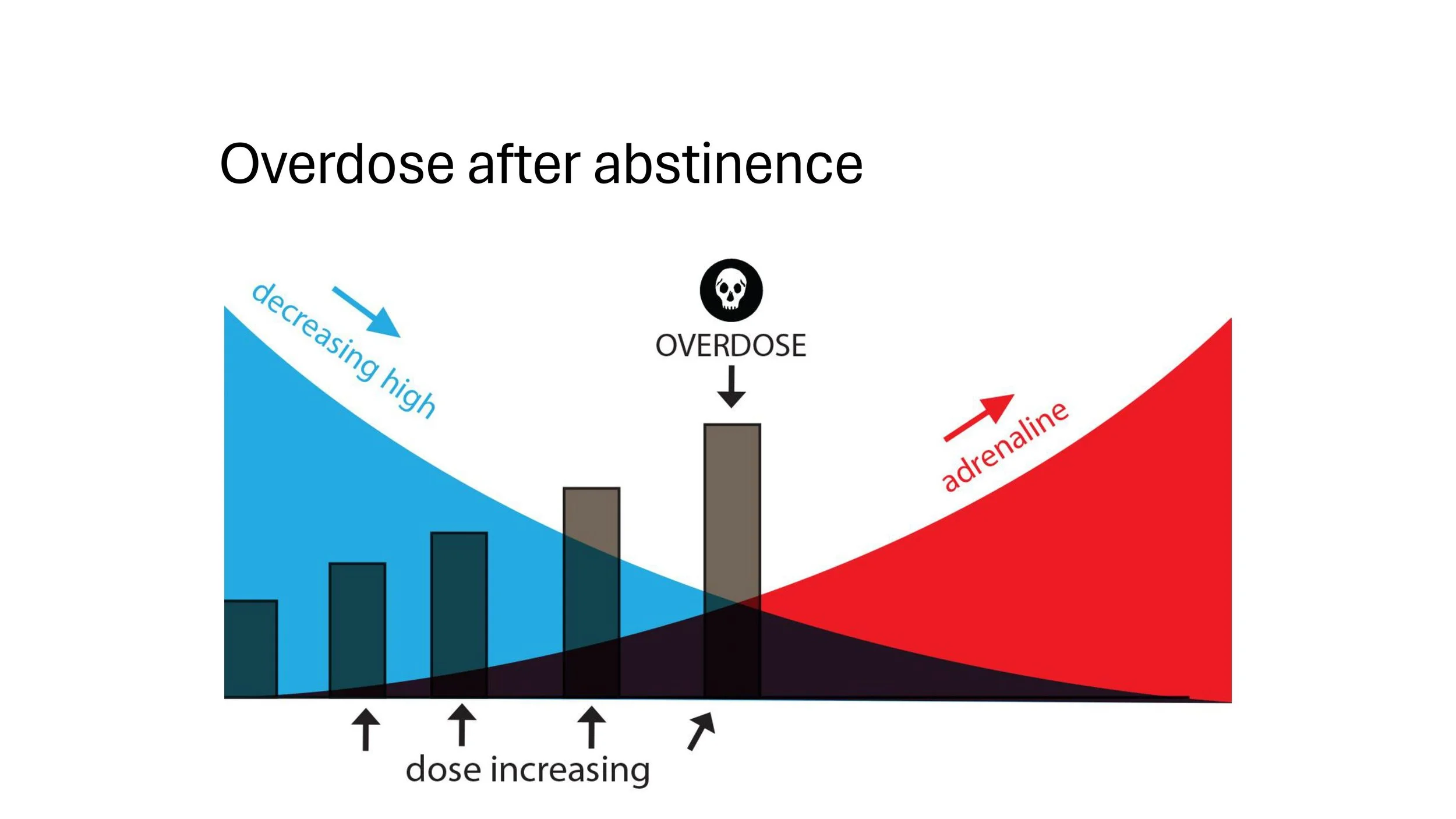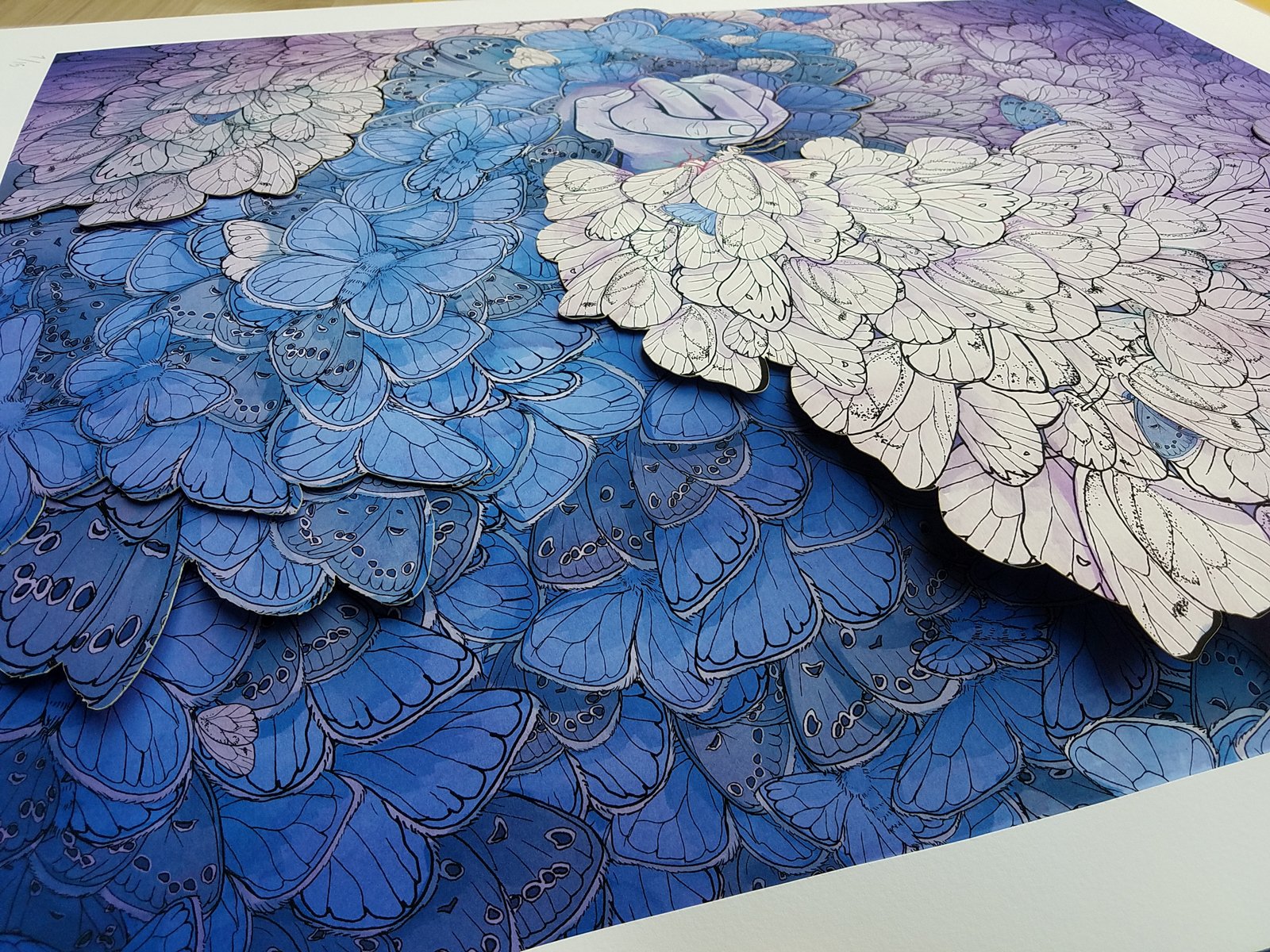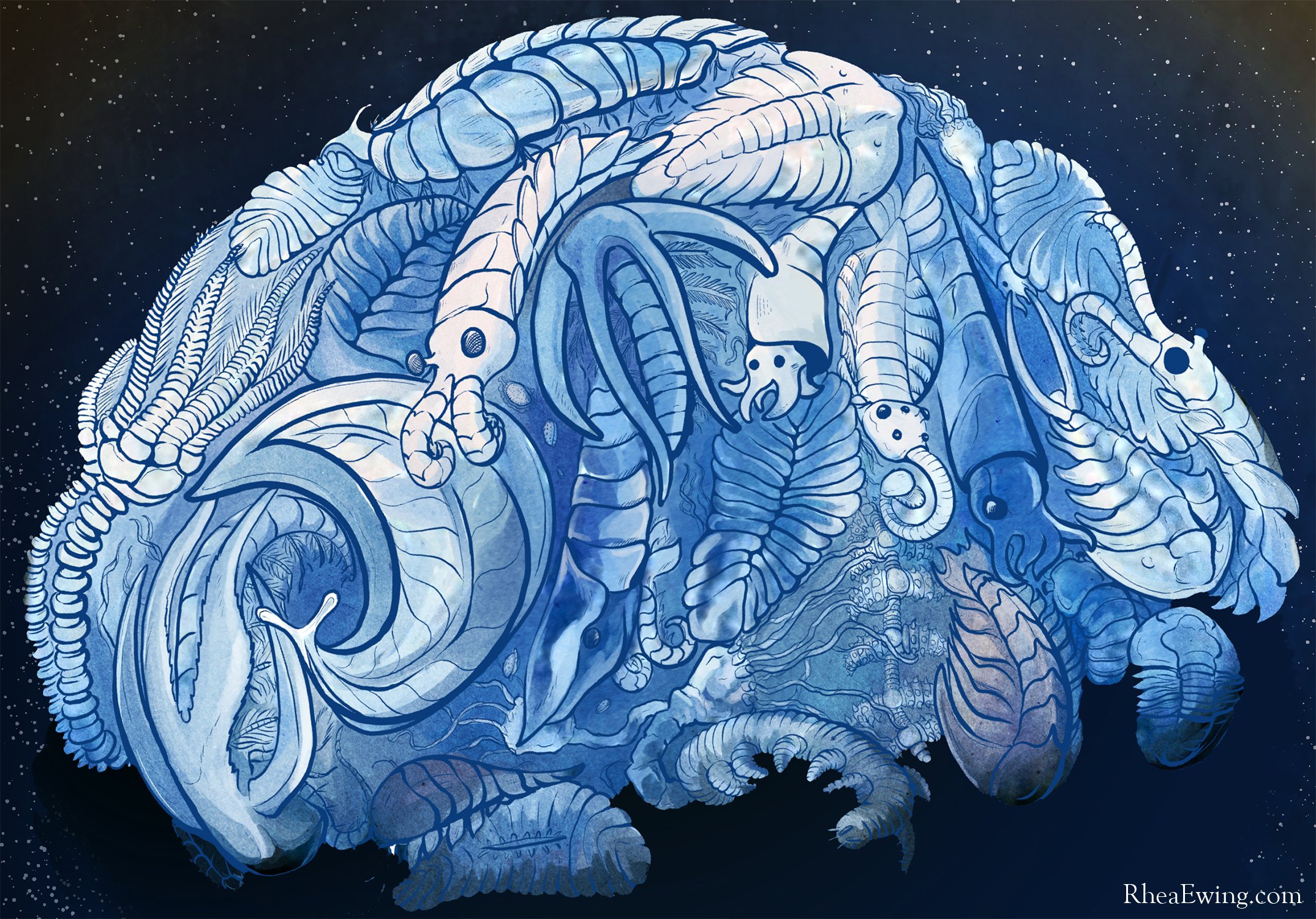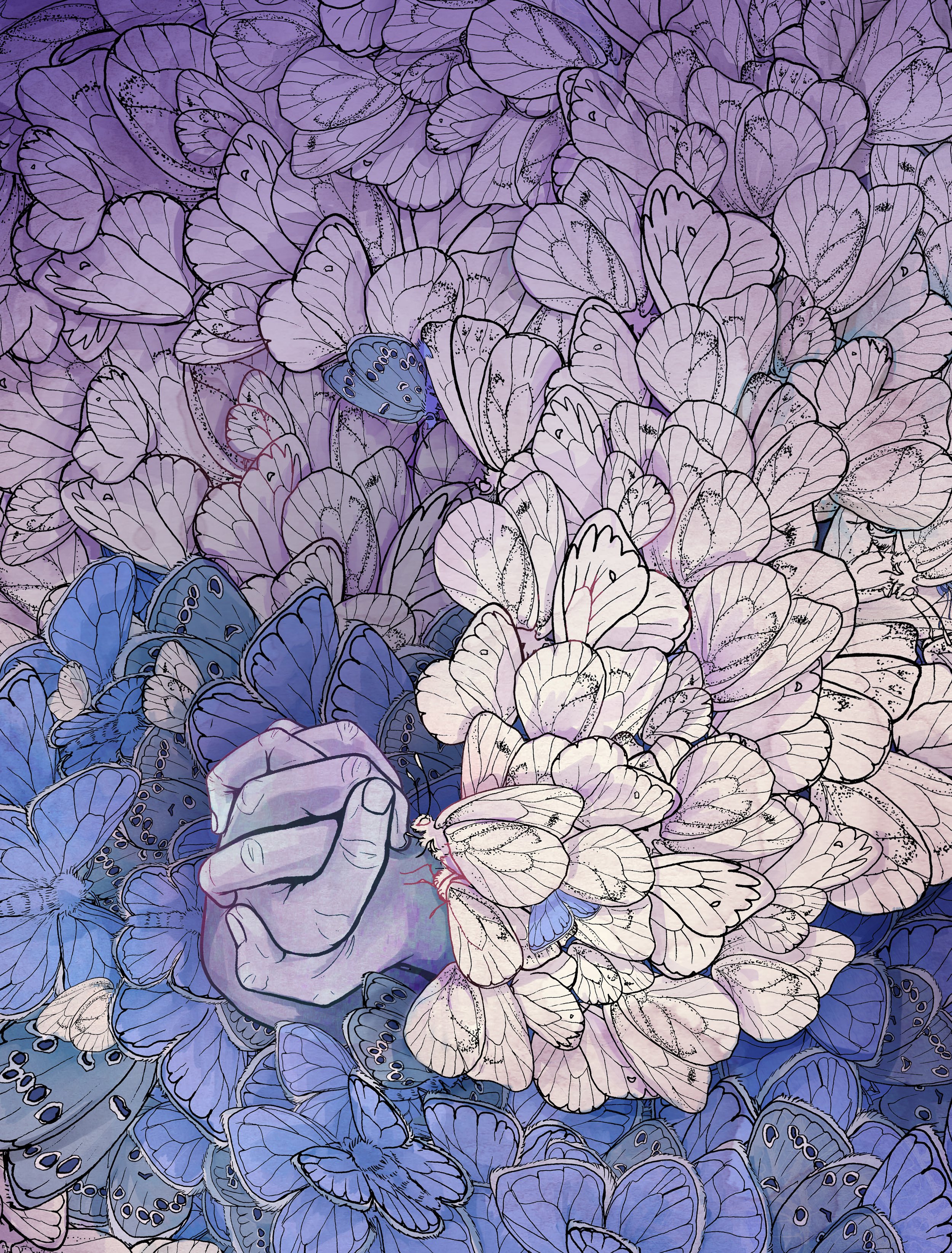
Well communicated science saves lives.
Is the story of your science coming across with the complexity and clarity it deserves?
Get a direct line to people’s hearts and minds with powerful visual communication.
Case Studies
Below are a few examples of visual science communication solutions I’ve developed for clients. This is just a taste, you can see more of what I offer further down the page.

An Analytical Mind
“Rhea has a scientist’s analytical mind, not just a creative one. They met me with the same energy that I brought and saw so many connections I didn’t even think about.”
- Anna Monfils, Central Michigan University
Creating Unified Vision
“The art captured people's attention, drew them in, and helped unify the vision for what we were doing. Rhea was extremely communicative and even delivered the finished work ahead of schedule.”
-Ali Trevino-Murphy, Dane County Library Services
Inspiring Artwork
“Rhea’s work is the most sought-after artwork the Alliance enjoys.”
-Luke Kloberdanz, Ice Age Trail Alliance
Great things happen when people connect with science.
I can facilitate that connection to your work, and I can manage the project so that you don’t have to take on more tasks than you need to.
I’m a scientifically literate artist, science communicator, and project manager.
Nothing conveys meaning like art. Art can capture emotion, spark curiosity, and grab attention in an instant. [1][2]
Art is a powerful storytelling tool.[3][4]
It can convey complex ideas very quickly.[5][6]
The combination of art and science creates more equitable and productive conversations with people from different perspectives.[6][7][8][9]
I’ve created educational artwork, written and illustrated articles for the general public, and illustrated learning modules to be used in undergraduate classrooms. My work has been used in student workshops, professional presentations, classrooms, conservation outreach and fundraisers, and I’ve been featured in critically-acclaimed exhibitions connecting art and science education.
I develop and manage my projects with a careful eye for respecting the time and expertise of my clients. For each project I begin by familiarizing myself with your work and any literature you send me. We then create a plan together on how to meet your specific goals, budget, and deadlines. I’m a responsive, communicative, and professional project partner.
If you haven't worked with an artist before, don't worry. I will guide you through the process with confidence and professionalism, always respecting your time and your dedication to your work.
You are an expert in your field of research. You deserve to work with an expert creative.
Who I Am
I’m Rhea Ewing, an award winning artist, comic author, and freelance science communicator. I got my start in the fine arts world, where I spent a decade doing science communication by accident through my artwork and writing. Eventually I realized that the science communication piece was my favorite part of my work and decided to shift my focus to connecting people to the power of science.
I’ve worked with scientists and non-profit organizations big and small in creating images that captivate and inspire audiences. For me, art and science are two sides of the same coin. Both require deep curiosity, a willingness to question, and a need to make meaning of the universe.
I’m also a proud member of the LGBTQ+ community and my work is deeply deeply committed to equity and bridging connections between people of all walks of life. Well communicated science has the power to saves lives, and it is our responsibility to ensure that scientific information is accessible to all.
Stop trudging through your outreach efforts and get something that resonates.
Citations
[1] Petersen, Kate L, Victor O Leshyk, Jane C Marks, and Bruce A Hungate. “Science-Telling through Art.” Frontiers in Ecology and the Environment 18, no. 3 (2020): 115–115. https://doi.org/10.1002/fee.2186.
[2] Lin, Shu-Fen, Huann-shyang Lin, Ling Lee, and Larry D. Yore. “Are Science Comics a Good Medium for Science Communication? The Case for Public Learning of Nanotechnology.” International Journal of Science Education, Part B 5, no. 3 (July 3, 2015): 276–94. https://doi.org/10.1080/21548455.2014.941040.
[3] Botsis, Taxiarchis, Jennifer E. Fairman, Meghan Bridgid Moran, and Valsamo Anagnostou. “Visual Storytelling Enhances Knowledge Dissemination in Biomedical Science.” Journal of Biomedical Informatics 107 (July 1, 2020): 103458. https://doi.org/10.1016/j.jbi.2020.103458.
[4] Ma, Kwan-Liu, Isaac Liao, Jennifer Frazier, Helwig Hauser, and Helen-Nicole Kostis. “Scientific Storytelling Using Visualization.” IEEE Computer Graphics and Applications 32, no. 1 (January 2012): 12–19. https://doi.org/10.1109/MCG.2012.24.
[5] Lin, Shu-Fen, Huann-shyang Lin, Ling Lee, and Larry D. Yore. “Are Science Comics a Good Medium for Science Communication? The Case for Public Learning of Nanotechnology.” International Journal of Science Education, Part B 5, no. 3 (July 3, 2015): 276–94. https://doi.org/10.1080/21548455.2014.941040.
[6] Reinsborough, Michael. “Art-Science Collaboration in an EPSRC/BBSRC-Funded Synthetic Biology UK Research Centre.” NanoEthics 14, no. 1 (April 1, 2020): 93–111. https://doi.org/10.1007/s11569-020-00367-3.
[7] Gurnon, Daniel, Julian Voss-Andreae, and Jacob Stanley. “Integrating Art and Science in Undergraduate Education.” PLOS Biology 11, no. 2 (February 26, 2013): e1001491. https://doi.org/10.1371/journal.pbio.1001491.
[8] Schinske, Jeffrey N., Heather Perkins, Amanda Snyder, and Mary Wyer. “Scientist Spotlight Homework Assignments Shift Students’ Stereotypes of Scientists and Enhance Science Identity in a Diverse Introductory Science Class.” CBE—Life Sciences Education 15, no. 3 (September 2016): ar47. https://doi.org/10.1187/cbe.16-01-0002.
[9] McElhaney, Kevin W., Hsin-Yi Chang, Jennifer L. Chiu, and Marcia C. Linn. “Evidence for Effective Uses of Dynamic Visualisations in Science Curriculum Materials.” Studies in Science Education 51, no. 1 (January 2, 2015): 49–85. https://doi.org/10.1080/03057267.2014.984506


